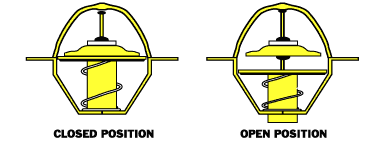Back to engine cooling systems
“My Engine Temperature Gauge Seems To Be Warm In Town, But When I Get On The Highway, It Gets Colder.”
That’s a statement I’ve heard from many clients, and the answer lies in your vehicle’s thermostat.
A thermostat regulates the flow of coolant throughout your vehicle. It cools down your car when it’s too hot, and heats it up if it’s too cold. Typically, it will hold the engine temperature at about 95 degrees celsius (just under boiling). It can healthily vary 5 degrees either way.
Generally thermostats will easily last 5-10 years and are maintenance-free. As they age, they can get inconsistent in their ability to control engine temperature.

A thermostat that opens too soon will warm up reasonably well in town, but tends to cool quickly on the highway, because the high speed driving blows cold air into your radiator and cools it down.
If a thermostat were to be stuck closed, it would warm up normally, and the temperature would continue to climb higher until the temperature gauge is at the top. At that point your car has overheated, and you need to shut off your vehicle.
It’s not overheating because the coolant’s low; it’s overheating because it has no flow.
“My Temperature Gauge Reads Normal, But My Heater Doesn’t Work. Do I Need A New Heater Core?”
Not necessarily.
A plugged heater core certainly would cause you to lose heat, however, there are other explanations for that problem.
For example, if you lose even 1-2 litres of coolant, the first thing you’ll notice is your heater producing less heat. If you top up the coolant, your heat should be restored. Of course, you still need to find out why your coolant was low in the first place.
Find out what the cause is, and fix it. Once the leak is corrected, everything should return to normal.
If topping up your coolant DOESN’T fix your heater, then you know the problem lies elsewhere.
Some other common reasons why you might not get heat are:
- the thermostatically controlled valve is broken or seized
- the heater core is broken or plugged
- the heater door near your temperature control is broken or seized
- there’s a plug somewhere else in the cooling system
Once you’ve realized that you have a thermostat problem, you now have a much better idea of what to expect when you take it in for repairs.
